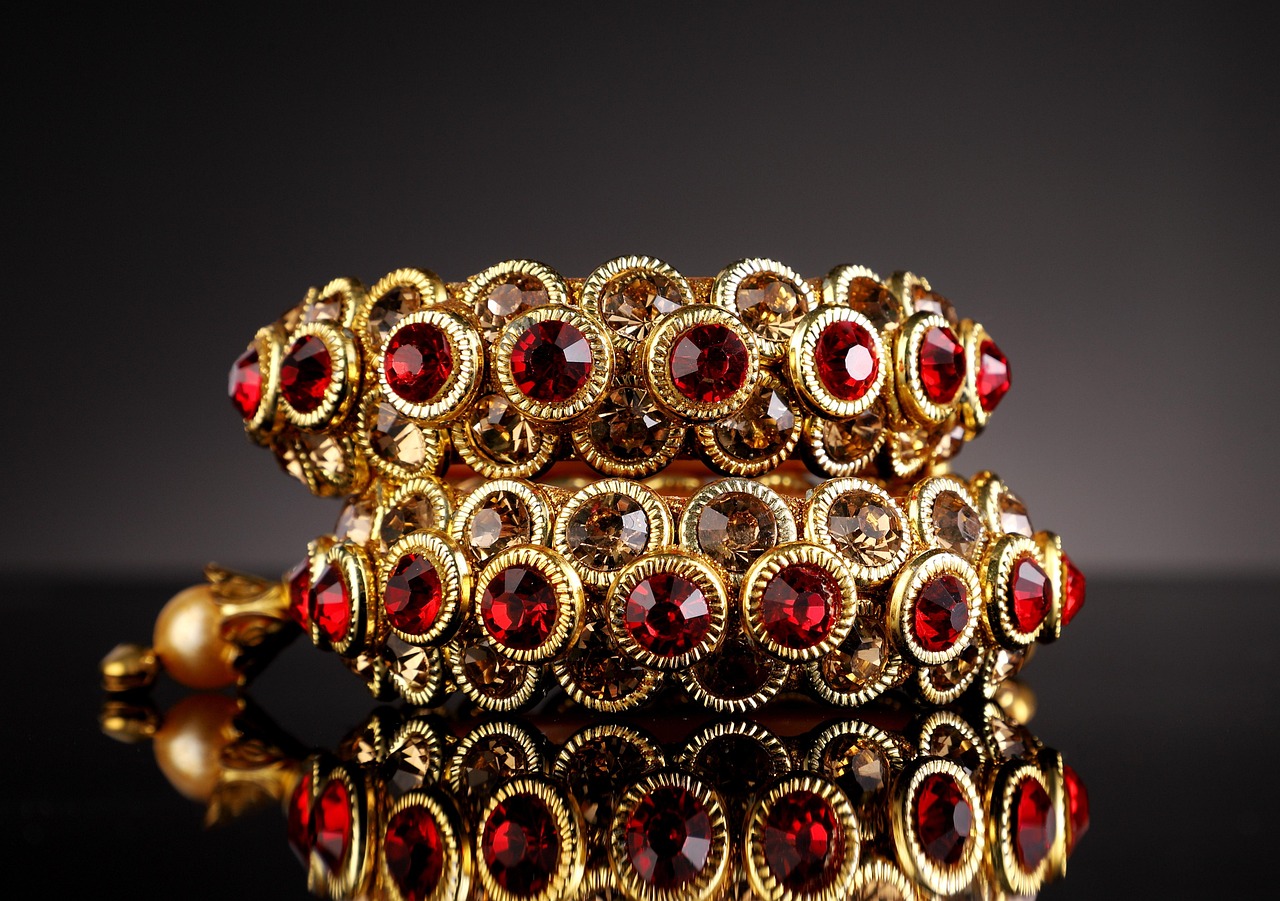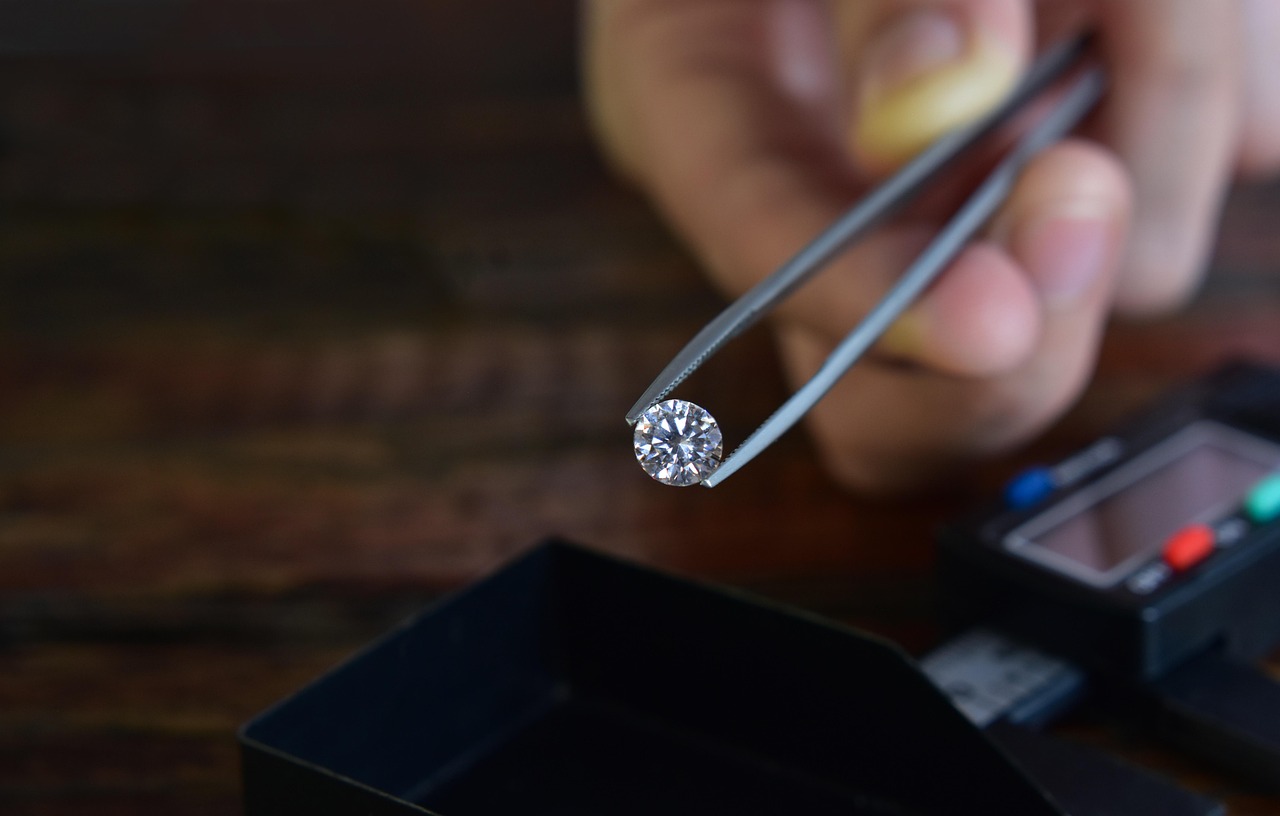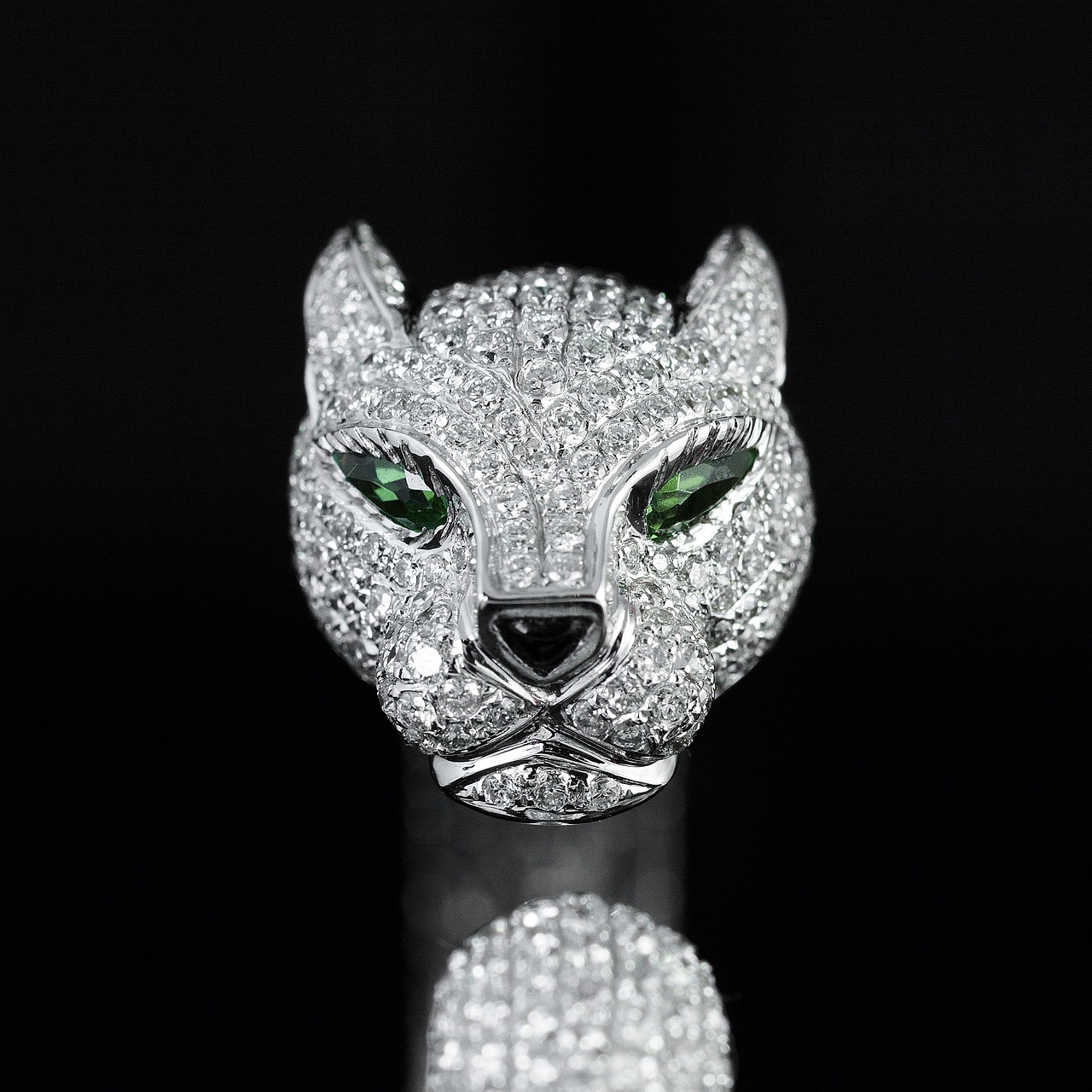This article delves into the advantages and disadvantages of lab-grown diamonds, providing valuable insights into their quality, environmental impact, and market trends. This information is designed to help consumers make informed decisions when considering their jewelry options.
What Are Lab-Grown Diamonds?
Lab-grown diamonds are produced in controlled environments through advanced technological processes that replicate the natural conditions under which diamonds form. These diamonds share the same physical and chemical properties as their mined counterparts, making them a compelling alternative for consumers.
The Benefits of Lab-Grown Diamonds
- Ethical Sourcing: One of the primary benefits of lab-grown diamonds is their ethical sourcing. Unlike mined diamonds, which may be associated with human rights abuses, lab-grown diamonds provide a guilt-free option for ethically conscious consumers.
- Affordability: Generally, lab-grown diamonds are more affordable than mined diamonds. This price difference allows consumers to purchase larger or higher-quality stones within the same budget.
- Environmental Sustainability: The production of lab-grown diamonds significantly reduces environmental impact, as it requires fewer natural resources compared to traditional mining.
Environmental Impact of Lab-Grown Diamonds
The environmental footprint of lab-grown diamonds is considerably lower than that of mined diamonds. Understanding these differences is crucial for consumers aiming to make eco-friendly choices.
- Lower Carbon Footprint: The manufacturing process of lab-grown diamonds emits less carbon, appealing to environmentally conscious buyers.
- Resource Conservation: Lab-grown diamonds conserve natural resources by eliminating the need for extensive mining operations, contributing to a more sustainable future.
Drawbacks of Lab-Grown Diamonds
- Resale Value Concerns: One of the potential drawbacks is that lab-grown diamonds may not retain their value as well as mined diamonds, which could affect resale opportunities.
- Consumer Perception: Despite their identical properties, some consumers still view lab-grown diamonds as inferior to mined diamonds, impacting their purchasing decisions.
Future Trends in Lab-Grown Diamonds
The market for lab-grown diamonds is evolving rapidly, with trends indicating a growing acceptance and demand. Staying informed about these developments can help consumers navigate their choices effectively.
In conclusion, lab-grown diamonds present a range of benefits and drawbacks that consumers should consider. By understanding these factors, individuals can make informed decisions that align with their values and preferences.

What Are Lab-Grown Diamonds?
Lab-grown diamonds are a remarkable innovation in the jewelry industry, created through advanced technological processes that replicate the natural formation of diamonds. Unlike traditional diamonds, which are mined from the earth, lab-grown diamonds are synthesized in controlled environments, ensuring consistency and quality. They share the same physical and chemical properties as their mined counterparts, making them an attractive option for consumers seeking both beauty and ethical considerations.
The process of creating lab-grown diamonds typically involves two main methods: High Pressure High Temperature (HPHT) and Chemical Vapor Deposition (CVD). The HPHT method simulates the natural conditions under which diamonds form, using extreme pressure and temperature to crystallize carbon. On the other hand, the CVD method involves vaporizing carbon-rich gases, allowing carbon atoms to settle and form diamond crystals over time. Both methods yield diamonds that are virtually indistinguishable from mined diamonds.
One of the significant advantages of lab-grown diamonds is their affordability. Because they are produced in a controlled setting, the costs associated with mining, transportation, and labor are significantly reduced. This price advantage allows consumers to purchase larger or higher-quality stones without exceeding their budgets.
Furthermore, lab-grown diamonds are often considered a more sustainable choice. The environmental impact of mining diamonds can be substantial, involving land disruption, water usage, and carbon emissions. In contrast, the production of lab-grown diamonds typically results in a lower carbon footprint and conserves natural resources, making them an eco-friendly alternative.
As consumer awareness grows, the demand for lab-grown diamonds is increasing, leading to a shift in market trends. More individuals are choosing these ethically sourced gems, recognizing their value and the benefits they offer. In conclusion, lab-grown diamonds represent a significant advancement in the diamond industry, combining beauty, ethics, and sustainability in a way that appeals to modern consumers.

The Benefits of Lab-Grown Diamonds
Lab-grown diamonds have gained significant traction in the jewelry market due to their numerous advantages. As consumers become more aware of ethical and environmental considerations, these diamonds present a compelling alternative to traditional mined diamonds. Below are some key benefits that highlight why lab-grown diamonds are becoming a preferred choice for many.
- Ethical Sourcing: One of the most compelling reasons to choose lab-grown diamonds is their ethical sourcing. Unlike mined diamonds, which can be associated with human rights violations and conflict zones, lab-grown diamonds are created in controlled environments. This ensures that consumers can purchase their jewelry without guilt, knowing that their choice does not contribute to unethical practices.
- Affordability: Lab-grown diamonds are generally more affordable than their mined counterparts. This price difference allows consumers to either purchase a larger stone or invest in higher quality without exceeding their budget. The cost-effectiveness of lab-grown diamonds makes them an attractive option for budget-conscious buyers.
- Environmental Sustainability: The production of lab-grown diamonds has a significantly lower environmental impact compared to traditional mining. Mining operations can lead to habitat destruction, soil erosion, and water pollution. In contrast, lab-grown diamonds require fewer natural resources and have a lower carbon footprint, appealing to environmentally conscious consumers.
- Transparency: The process of creating lab-grown diamonds is highly transparent. Consumers can trace the origin and production methods of their diamonds, fostering a sense of trust and assurance in their purchase. This level of transparency is often lacking in the mined diamond industry, where the journey from mine to market can be obscured.
- Quality and Variety: Lab-grown diamonds are chemically and physically identical to mined diamonds, offering the same brilliance and durability. They come in a wide range of styles and settings, allowing consumers to express their individuality without compromising on quality.
In conclusion, lab-grown diamonds present a range of benefits that make them an appealing choice for modern consumers. From ethical sourcing and affordability to environmental sustainability and transparency, these diamonds align with the values of a growing number of jewelry buyers. As awareness continues to spread, lab-grown diamonds are likely to become a staple in the jewelry market, offering a responsible and beautiful choice for all occasions.
Ethical Sourcing
One of the most significant advantages of lab-grown diamonds is their . Unlike traditional mined diamonds, which are often associated with a range of human rights abuses and environmental degradation, lab-grown diamonds offer a more responsible alternative. This aspect is increasingly important for consumers who are becoming more aware of the ethical implications of their purchases.
Lab-grown diamonds are created in controlled environments using advanced technological processes that replicate the natural conditions under which diamonds form. This means that they are not extracted from the earth, thereby avoiding the potential for conflict diamonds, which can finance violence and exploitation in mining regions. As a result, consumers can purchase lab-grown diamonds with the peace of mind that their choice does not contribute to these issues.
Furthermore, the transparency in production of lab-grown diamonds is a key selling point. Consumers can trace the origins of their diamonds and understand the methods used to create them. This level of transparency fosters trust, as buyers can be assured that their diamonds were produced ethically and sustainably.
Additionally, many companies specializing in lab-grown diamonds provide detailed information about their sourcing practices, allowing consumers to make informed decisions. This is a stark contrast to the traditional diamond industry, where the supply chain can often be opaque.
In summary, the ethical sourcing of lab-grown diamonds not only addresses serious social and environmental issues but also empowers consumers to make choices that align with their values. As awareness grows and demand for ethical products increases, lab-grown diamonds are likely to become an even more popular choice among conscientious buyers.
Conflict-Free Assurance
Lab-grown diamonds represent a significant shift in the diamond industry, particularly when it comes to ethical considerations. One of the most compelling attributes of these diamonds is their . Unlike traditional mined diamonds, which can often be associated with human rights abuses and funding for violent conflicts in war-torn regions, lab-grown diamonds are cultivated in controlled environments, ensuring they are free from such ethical dilemmas.
This ethical sourcing appeals to a growing segment of consumers who are increasingly aware of the implications of their purchases. Many buyers are actively seeking out products that align with their values, and lab-grown diamonds offer a guilt-free alternative. By choosing lab-grown options, consumers can enjoy the beauty and brilliance of diamonds without contributing to the issues linked to their mined counterparts.
Moreover, the transparency in the production process of lab-grown diamonds enhances consumer confidence. Buyers can trace the origins and methods used in creating these diamonds, which is often not the case with mined diamonds. This level of transparency fosters trust and allows consumers to make informed choices about their purchases.
Additionally, the environmental impact of lab-grown diamonds is considerably lower. The energy and resources required for their production are significantly reduced compared to traditional mining, which often leads to extensive ecological damage. By opting for lab-grown diamonds, consumers not only make an ethical choice but also contribute to a more sustainable future.
In summary, the of lab-grown diamonds stands as a powerful incentive for consumers. It not only addresses ethical concerns but also promotes transparency and sustainability, making them an attractive choice for modern buyers who value both beauty and responsibility in their jewelry.
Transparency in Production
The production of lab-grown diamonds is characterized by a high degree of transparency, which is a crucial factor for many consumers today. This transparency allows buyers to gain a comprehensive understanding of the entire process, from the initial creation to the final product. Unlike traditional mined diamonds, where the origins can often be murky and linked to various ethical concerns, lab-grown diamonds provide a clear narrative.
When consumers choose lab-grown diamonds, they can easily access information about the methods used in their creation. These diamonds are cultivated in controlled environments using advanced technology that replicates the natural diamond formation process. This means that consumers can be assured of the ethical standards upheld during production, as well as the environmental practices involved.
- Ethical Manufacturing: Lab-grown diamonds are produced without the human rights violations often associated with mined diamonds. This ethical manufacturing process appeals to socially conscious consumers.
- Traceability: Many companies provide detailed information about the production process, including the technology used and the facilities where the diamonds are created. This level of traceability builds consumer trust.
- Quality Assurance: Lab-grown diamonds undergo rigorous testing and quality control, ensuring that every stone meets high standards. This assurance is often communicated to consumers, reinforcing the product’s credibility.
Moreover, the transparency in production not only enhances consumer trust but also fosters a sense of community among buyers. Many consumers appreciate knowing the story behind their diamond, including the technology and innovation that went into its creation. This connection can make the purchase feel more meaningful.
In conclusion, the transparent production process of lab-grown diamonds is a significant advantage that resonates with modern consumers. By providing clear information about how and where these diamonds are made, producers build trust and confidence in their products, making lab-grown diamonds an appealing choice for those who prioritize ethics and sustainability in their purchasing decisions.
Affordability
is one of the most compelling reasons why many consumers are turning to lab-grown diamonds. Unlike their mined counterparts, lab-grown diamonds are typically more affordable, making them an attractive option for those who are budget-conscious yet desire a beautiful and high-quality gemstone.
The price difference between lab-grown and mined diamonds can be significant. On average, lab-grown diamonds can cost up to 30-40% less than mined diamonds. This affordability allows consumers to purchase larger or higher-quality stones without exceeding their budget. For example, a consumer might opt for a 2-carat lab-grown diamond instead of a 1-carat mined diamond, providing a more impressive appearance without a hefty price tag.
Additionally, the lower production costs associated with lab-grown diamonds contribute to their reduced prices. The technological advancements in diamond synthesis have made the creation of these stones more efficient and cost-effective. This efficiency translates to savings for consumers, allowing them to invest in other aspects of their jewelry, such as intricate settings or additional pieces.
Moreover, the market dynamics also play a role in the pricing of lab-grown diamonds. As the technology continues to improve and the production of lab-grown diamonds becomes more widespread, prices are expected to stabilize or even decrease further. This trend means that consumers can anticipate even more competitive pricing in the future.
In conclusion, the affordability of lab-grown diamonds not only makes them a smart financial choice but also opens up opportunities for consumers to own larger and higher-quality gemstones. With the added benefits of ethical sourcing and environmental sustainability, lab-grown diamonds present a compelling option for modern buyers.

Environmental Impact of Lab-Grown Diamonds
The Environmental Impact of Lab-Grown Diamonds
Lab-grown diamonds are increasingly recognized for their environmental benefits compared to traditional mined diamonds. As consumers become more eco-conscious, understanding the differences in their environmental impacts is crucial for making informed choices.
Lower Carbon Footprint
One of the most significant advantages of lab-grown diamonds is their lower carbon footprint. The production of these diamonds typically requires less energy than mining operations, which involve extensive excavation and transportation. According to various studies, lab-grown diamonds can produce up to 90% less carbon emissions than their mined counterparts. This reduction is vital in the fight against climate change and aligns with the values of environmentally aware consumers.
Resource Conservation
In addition to a smaller carbon footprint, lab-grown diamonds contribute to resource conservation. The mining of diamonds often leads to habitat destruction, soil erosion, and water pollution. By contrast, lab-grown diamonds are produced using advanced technological processes that do not require the same level of natural resource extraction. This aspect makes them a more sustainable choice for consumers who are concerned about the ecological footprint of their purchases.
Water Usage
Another critical factor is water usage. Traditional diamond mining can consume vast amounts of water, which can deplete local water supplies and harm surrounding ecosystems. Lab-grown diamond production, however, generally uses significantly less water, making it a more sustainable option for the environment.
Conclusion
In summary, lab-grown diamonds not only offer a beautiful and ethical alternative to mined diamonds but also present a lower environmental impact. By choosing lab-grown options, consumers can make a positive contribution to the planet while enjoying the luxury and beauty of diamonds. Understanding these differences empowers consumers to make choices that align with their values and environmental concerns.
Lower Carbon Footprint
is one of the key advantages of lab-grown diamonds that has garnered significant attention in recent years. As consumers become increasingly aware of their environmental impact, the demand for sustainable options has surged.
Lab-grown diamonds are produced using advanced technological processes that simulate the natural conditions under which diamonds form. This method not only allows for the creation of beautiful gemstones but also significantly reduces the carbon emissions associated with their production. In contrast, traditional diamond mining is an energy-intensive process that often leads to substantial environmental degradation.
According to recent studies, the carbon footprint of lab-grown diamonds can be up to 60% lower than that of mined diamonds. This reduction is primarily due to the decreased energy consumption and the elimination of the extensive mining operations required to extract natural diamonds. Furthermore, the use of renewable energy sources in the production of lab-grown diamonds further enhances their sustainability profile.
For environmentally conscious buyers, this lower carbon footprint is not just a statistic; it represents a conscious choice to support practices that are less harmful to the planet. Many consumers today are looking for ways to align their purchases with their values, and choosing lab-grown diamonds allows them to do just that.
Moreover, as the technology behind lab-grown diamonds continues to advance, the industry is likely to become even more efficient, further reducing its environmental impact. This trend is promising for the future of sustainable jewelry, as consumers increasingly prioritize sustainability in their purchasing decisions.
In conclusion, the of lab-grown diamonds not only makes them an attractive option for eco-conscious buyers but also positions them as a leading choice in the evolving landscape of sustainable luxury. By opting for lab-grown diamonds, consumers can enjoy the beauty and brilliance of diamonds while making a positive contribution to the environment.
Resource Conservation
is a critical aspect of the conversation surrounding lab-grown diamonds. Unlike traditional diamonds, which necessitate extensive mining operations that can devastate landscapes and ecosystems, lab-grown diamonds are produced in controlled environments, significantly reducing the environmental impact.
The process of mining diamonds often leads to the depletion of natural resources, including water and soil, while also causing extensive habitat destruction. In contrast, lab-grown diamonds are created using advanced technological methods that mimic the natural formation of diamonds without the need for extensive land disruption. This means that more natural habitats are preserved, contributing to biodiversity conservation.
| Impact of Mining | Impact of Lab-Grown Diamonds |
|---|---|
| Depletion of natural resources | Minimal resource use |
| Habitat destruction | Preservation of ecosystems |
| High carbon emissions | Lower carbon footprint |
Furthermore, the energy consumption associated with producing lab-grown diamonds is generally lower than that of mining operations. This results in a significantly reduced carbon footprint, making lab-grown diamonds a more sustainable choice for environmentally conscious consumers. By choosing lab-grown diamonds, individuals can support a shift towards more sustainable practices in the jewelry industry.
In conclusion, the conservation of natural resources through lab-grown diamond production not only helps in protecting the environment but also paves the way for a more sustainable future. As consumers become more aware of their purchasing choices, the demand for lab-grown diamonds is likely to increase, further promoting eco-friendly practices in the industry.

Drawbacks of Lab-Grown Diamonds
While lab-grown diamonds come with numerous advantages, it is crucial to acknowledge their drawbacks as well. Understanding these limitations can help consumers make an informed decision when considering a purchase.
- Resale Value Concerns: One of the primary drawbacks of lab-grown diamonds is their potential resale value. Unlike mined diamonds, which often appreciate over time, lab-grown diamonds may not hold their value as effectively. This can be a significant consideration for those looking to invest in a diamond with long-term value.
- Consumer Perception: The perception of lab-grown diamonds varies among consumers. Some individuals still view them as inferior to natural diamonds, despite their identical physical and chemical properties. This perception can affect market acceptance and influence purchasing decisions, leading some to prefer mined diamonds for their perceived authenticity.
- Market Saturation: As lab-grown diamonds become more popular, there is a risk of market saturation. An oversupply may lead to decreased prices, further impacting the resale value and long-term investment potential of these diamonds.
- Limited Uniqueness: Each mined diamond is unique, often characterized by its natural imperfections and distinctive features. In contrast, lab-grown diamonds can be produced in similar conditions, leading to a lack of uniqueness that some consumers may find less appealing.
- Brand Perception: Certain luxury brands have built their reputations on offering only natural diamonds. As a result, lab-grown diamonds may not be recognized within these prestigious circles, which could influence a consumer’s choice based on brand loyalty and status.
In conclusion, while lab-grown diamonds present numerous benefits, including ethical sourcing and affordability, it is essential to consider their drawbacks as well. Evaluating factors such as resale value and consumer perception can guide potential buyers in making a choice that aligns with their values and expectations.
Resale Value Concerns
When considering the purchase of a diamond, one important factor that often gets overlooked is the resale value. While lab-grown diamonds have gained popularity due to their ethical sourcing and affordability, potential buyers should be aware that these diamonds may not retain their value as effectively as their mined counterparts. This aspect can significantly impact resale opportunities and long-term investment considerations.
Lab-grown diamonds are produced in controlled environments, which allows for a consistent and often lower price point compared to mined diamonds. However, this same factor contributes to their depreciation in value. Unlike mined diamonds, which are finite in supply and have a long-standing history of value retention, lab-grown diamonds are created in abundance. This abundance can lead to a saturated market, making it more challenging to sell these diamonds at a price that reflects their original purchase cost.
Moreover, the perception of lab-grown diamonds plays a crucial role in their resale value. Many consumers still associate traditional mined diamonds with luxury and status, leading to a preference for them over lab-grown options. This perception can deter potential buyers in the resale market, further diminishing the value of lab-grown diamonds.
Another factor to consider is the market trends. As lab-grown diamonds become more mainstream, their prices may stabilize, but the initial depreciation can still be a concern for those looking to invest. It is essential for consumers to weigh these factors carefully and consider whether they are purchasing a diamond for personal enjoyment or as a long-term investment.
In conclusion, while lab-grown diamonds offer numerous advantages, the potential concerns regarding their resale value should not be ignored. Buyers should conduct thorough research and consider their long-term intentions before making a purchase decision.
Consumer Perception
plays a crucial role in the acceptance and popularity of lab-grown diamonds in the marketplace. Despite their identical physical and chemical properties to mined diamonds, many consumers still hold the belief that lab-grown diamonds are somehow inferior.
This perception can stem from several factors, including traditional views on luxury goods, marketing influences, and a lack of understanding about the technology behind lab-grown diamonds. Many people associate the term “diamond” with the romantic notion of natural stones formed over millions of years, which can lead to skepticism regarding the authenticity and value of lab-grown alternatives.
Furthermore, the luxury market has historically positioned mined diamonds as a symbol of status and wealth. As a result, consumers may view lab-grown diamonds as less prestigious, even though they are chemically and physically indistinguishable. This perception can significantly influence purchasing decisions, as buyers might opt for mined diamonds to align with societal expectations or personal beliefs about what constitutes a “real” diamond.
- Education and Awareness: Increasing consumer education about lab-grown diamonds is essential. Many potential buyers are unaware of the benefits and ethical implications of choosing lab-grown over mined diamonds.
- Marketing Strategies: Brands that successfully communicate the value, quality, and ethical advantages of lab-grown diamonds can help shift consumer perceptions.
- Celebrity Influence: Endorsements from celebrities and influencers can also play a pivotal role in changing public perception and normalizing the idea of lab-grown diamonds.
In summary, while lab-grown diamonds offer numerous benefits, the current consumer perception often hinders their market acceptance. Overcoming this challenge requires a concerted effort in education and marketing to highlight their ethical, environmental, and financial advantages.

Future Trends in Lab-Grown Diamonds
are shaping the jewelry market in exciting ways. As consumer awareness grows and technology advances, the landscape for lab-grown diamonds continues to evolve rapidly. Understanding these trends is crucial for consumers who wish to make informed choices about their purchases.
One of the most significant trends is the increasing acceptance of lab-grown diamonds among consumers. As more people become educated about the ethical and environmental benefits of these stones, the stigma surrounding them is diminishing. This shift in perception is leading to a surge in demand, making lab-grown diamonds a viable alternative to mined options.
Another trend is the enhanced quality of lab-grown diamonds. Advances in technology have allowed producers to create diamonds that are not only visually stunning but also possess superior clarity and color. This improvement in quality is attracting a broader audience, including those who previously preferred natural diamonds.
Moreover, the affordability of lab-grown diamonds continues to be a major selling point. As production methods become more efficient, prices are expected to decrease further, making these diamonds accessible to a wider range of consumers. This trend is particularly appealing to younger buyers who are often budget-conscious yet desire quality and ethical sourcing.
Additionally, the rise of online retailers specializing in lab-grown diamonds is transforming the shopping experience. Consumers can now easily compare prices and quality from the comfort of their homes, leading to more informed purchasing decisions. This accessibility is crucial in driving the market forward.
In conclusion, the future of lab-grown diamonds looks promising, with trends indicating a shift towards greater acceptance, improved quality, and enhanced accessibility. By staying informed about these developments, consumers can navigate their choices effectively and opt for a more ethical and sustainable option in the jewelry market.
Frequently Asked Questions
- What are lab-grown diamonds?
Lab-grown diamonds are diamonds created in controlled environments using advanced technology. They mimic the natural formation process and possess the same physical and chemical properties as mined diamonds, making them a popular and ethical alternative.
- Are lab-grown diamonds ethical?
Absolutely! Lab-grown diamonds are sourced ethically and are guaranteed to be conflict-free. This means you can wear them with pride, knowing they haven’t contributed to human rights violations or environmental degradation.
- How do lab-grown diamonds compare in price to mined diamonds?
Lab-grown diamonds are typically more affordable than mined diamonds. This price difference allows consumers to purchase larger or higher-quality stones without breaking the bank, making them a smart choice for budget-conscious buyers.
- Do lab-grown diamonds have resale value?
While lab-grown diamonds may not hold their value as well as mined diamonds, they can still be resold. It’s important to consider your long-term plans when investing in a diamond, as market perceptions can influence resale opportunities.
- What is the environmental impact of lab-grown diamonds?
Lab-grown diamonds have a significantly lower environmental impact compared to mined diamonds. Their production requires less energy and conserves natural resources, making them a more sustainable choice for eco-conscious consumers.













